Valves UK
ASCO 34203086 Filter Regulator
ASCO 34203086 Filter Regulator
Couldn't load pickup availability
IN STOCK - SAME DAY DISPATCH
The ASCO 34203086 Filter Regulator from the 342 Series is a high-performance, combined air preparation unit designed to deliver clean, dry, and precisely regulated air for pneumatic systems. With a G1/4” port connection and a controlled pressure range of 0.5 to 10 bar, this compact yet efficient filter regulator ensures consistent downstream pressure and optimal air quality for industrial and automation applications.
Key Features:
Series: ASCO 342 Series
Function: Combined Filter and Regulator
Port size: G1/4”
Pressure range: 0.5 to 10 bar (controlled)
Flow rate: 1800 L/min
Media: Compressed air, neutral gases
Body dimensions: 112 × 105 × 251 mm
Bowl capacity: 114 cm³
Durable and compact design for space-limited installations
Ensures clean, regulated air to protect pneumatic equipment
Share
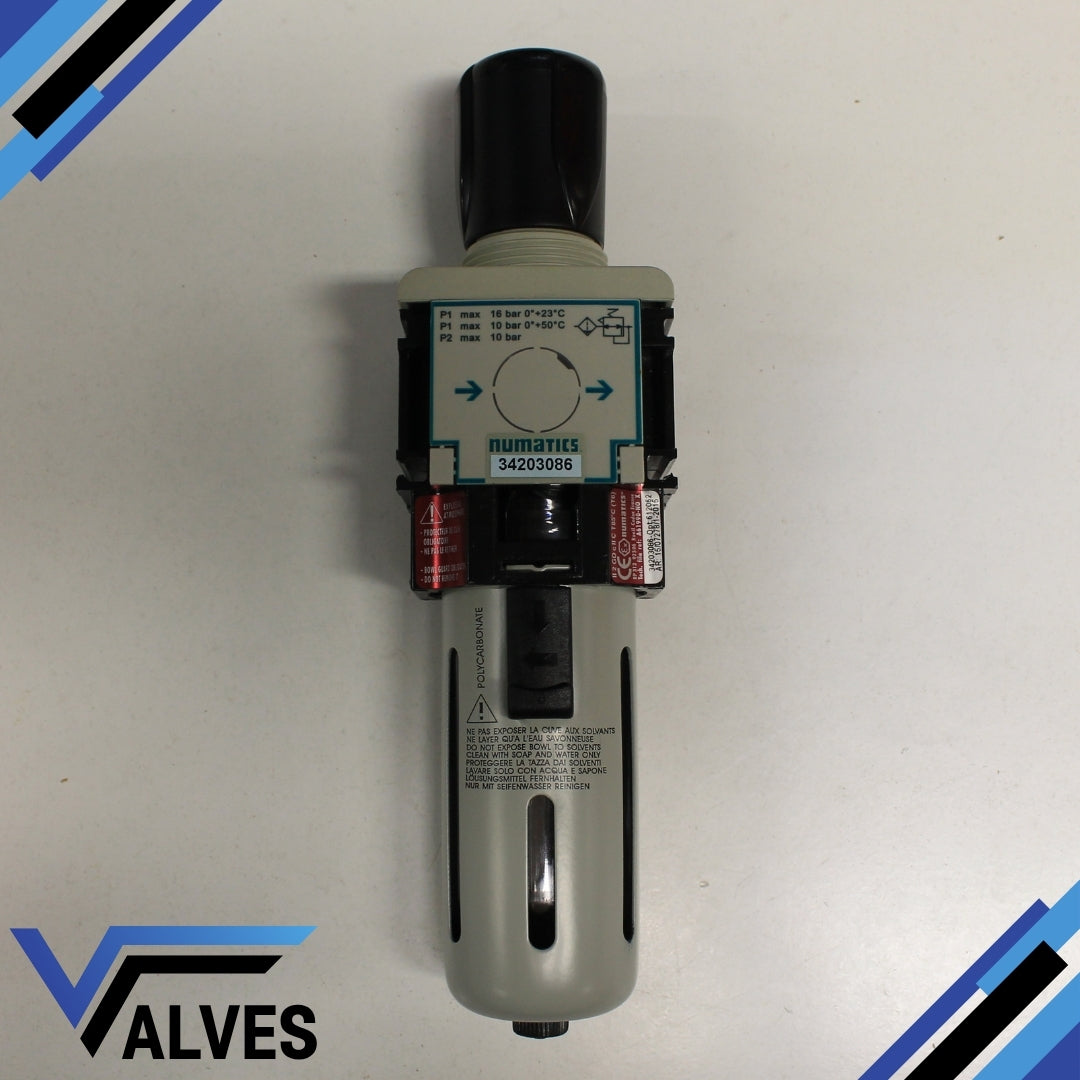
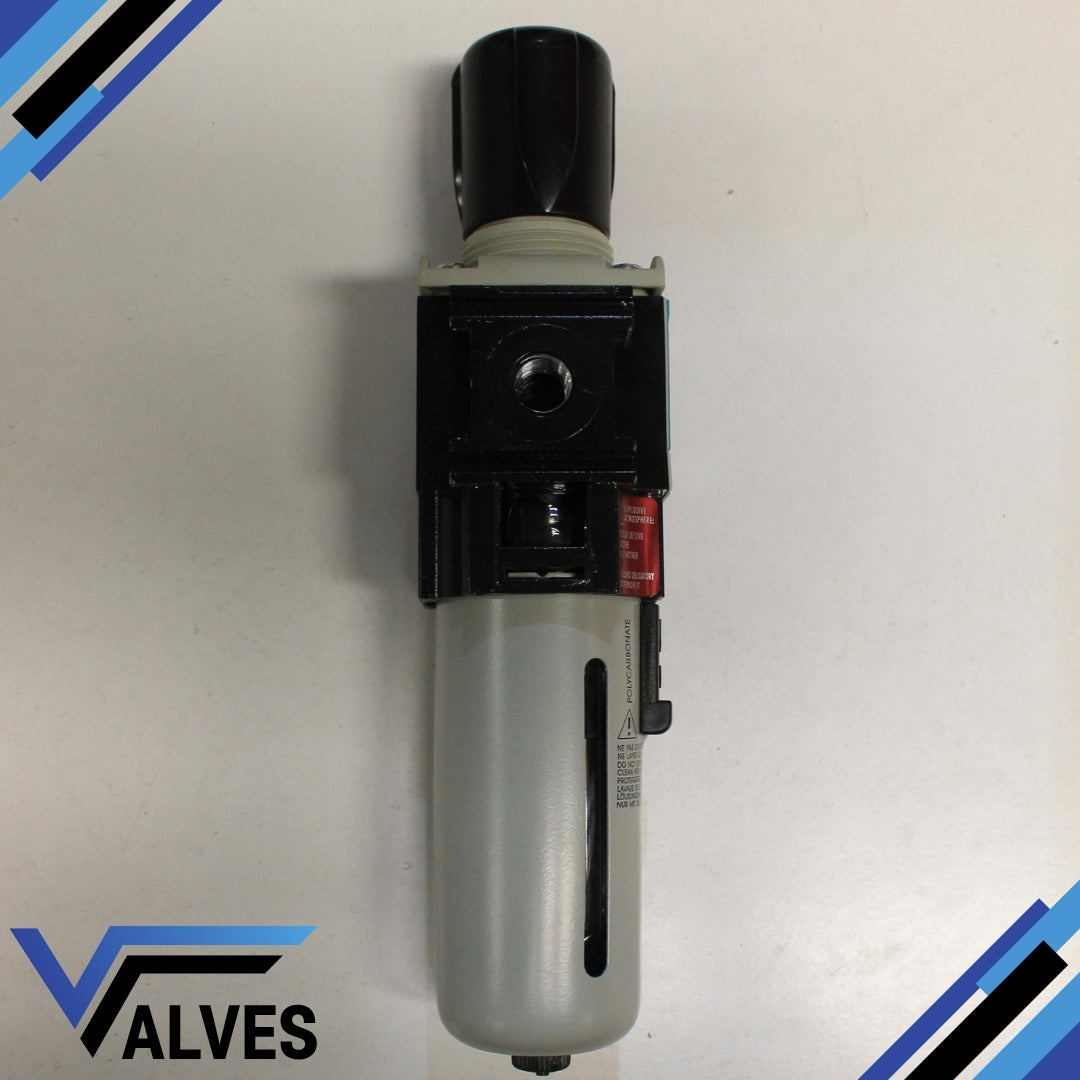
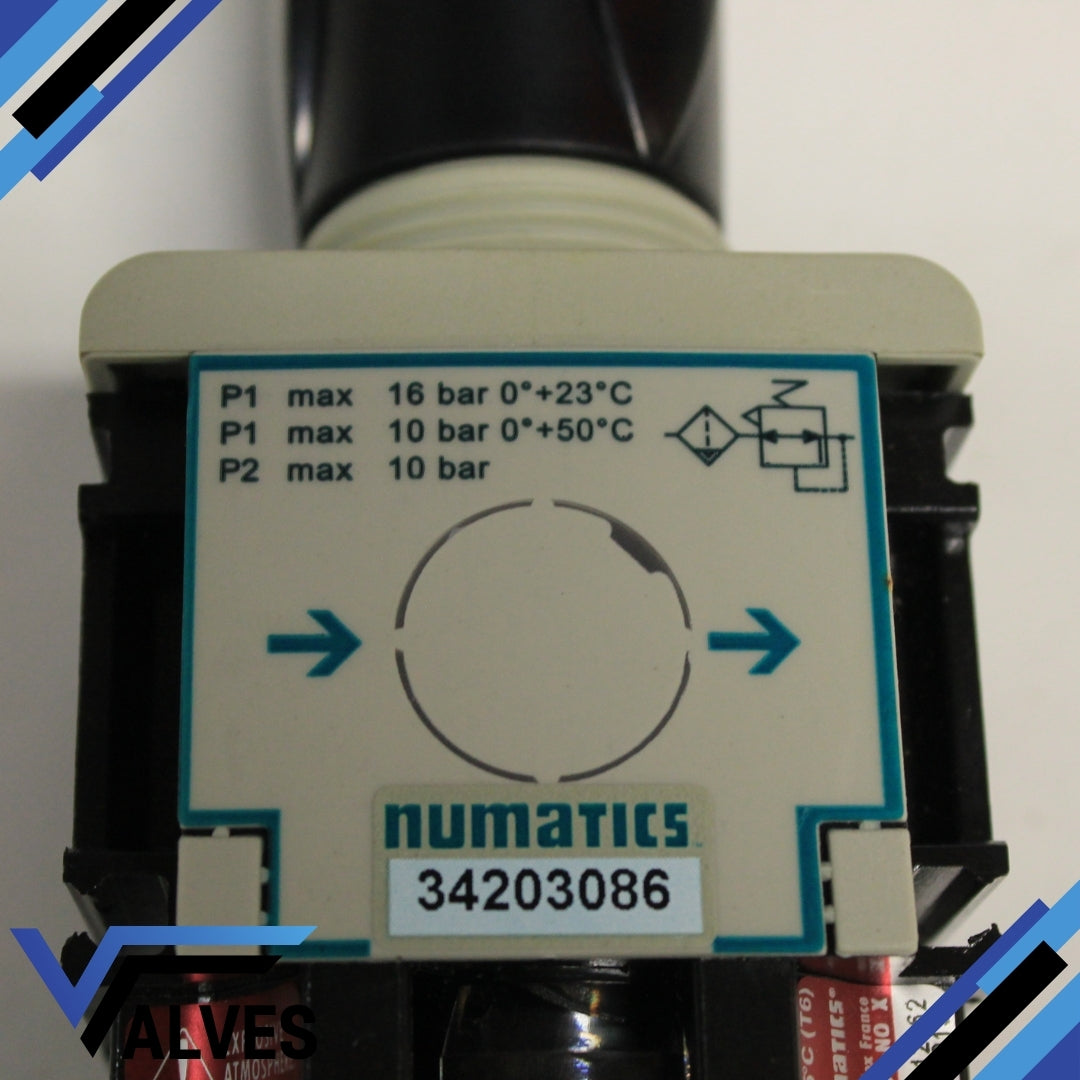
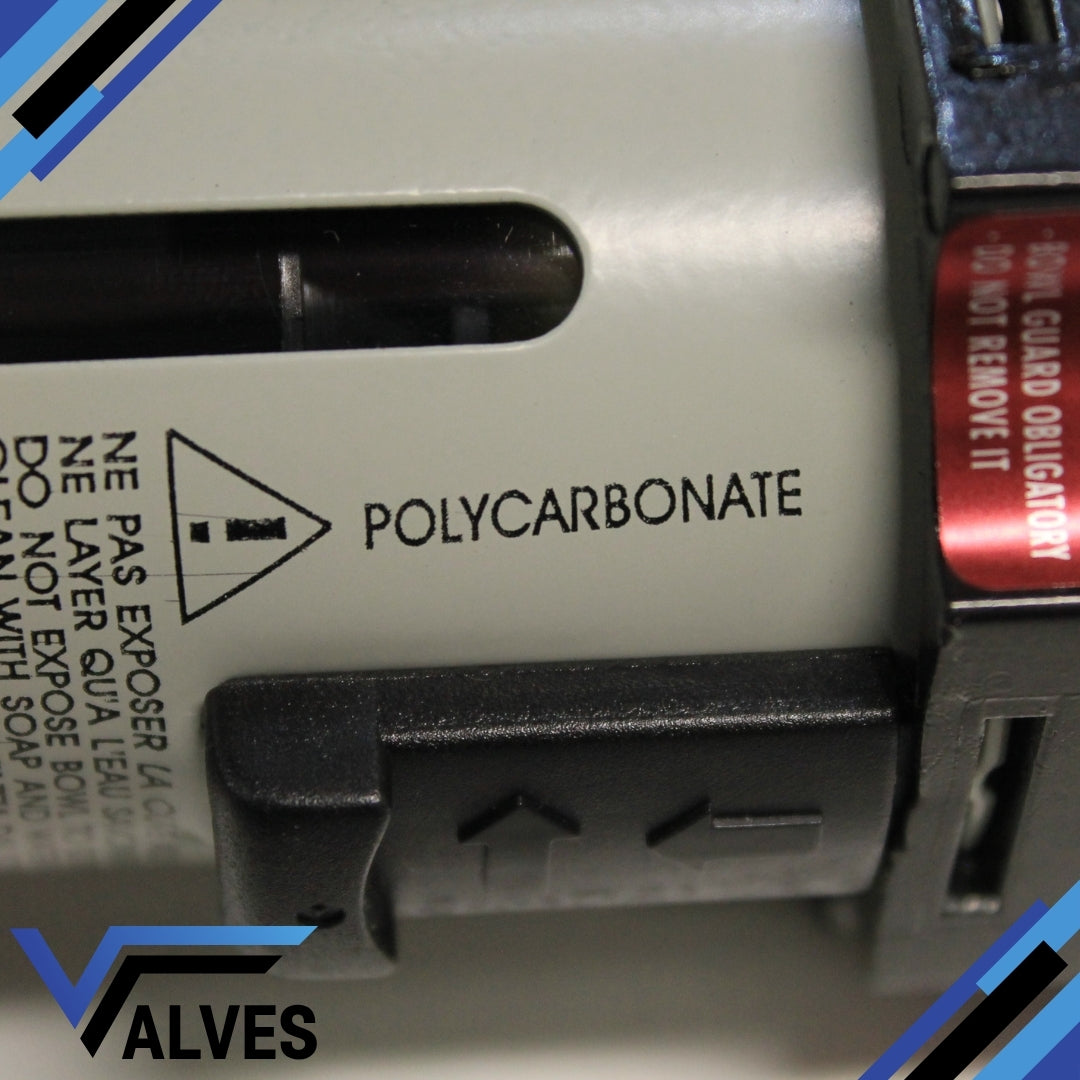
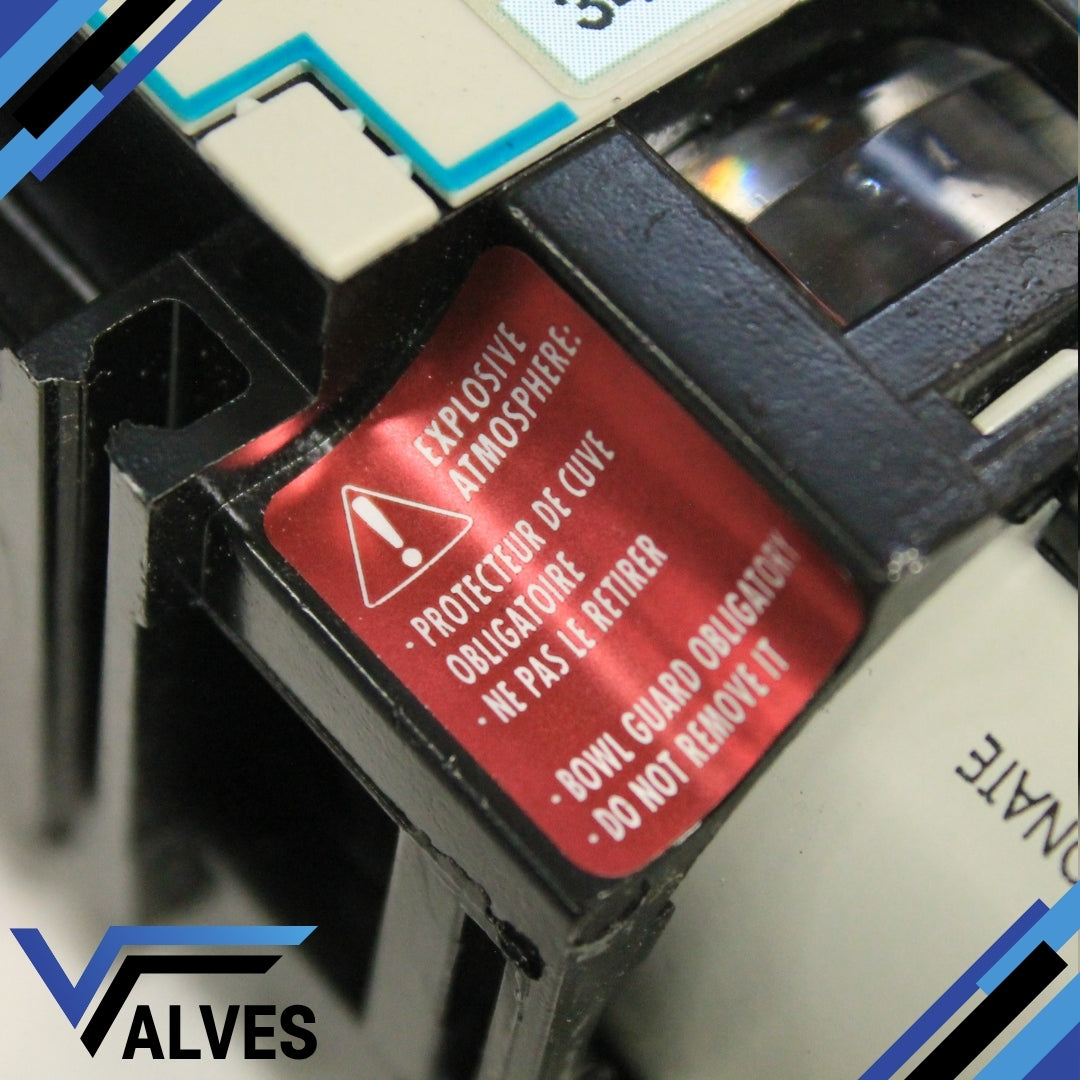
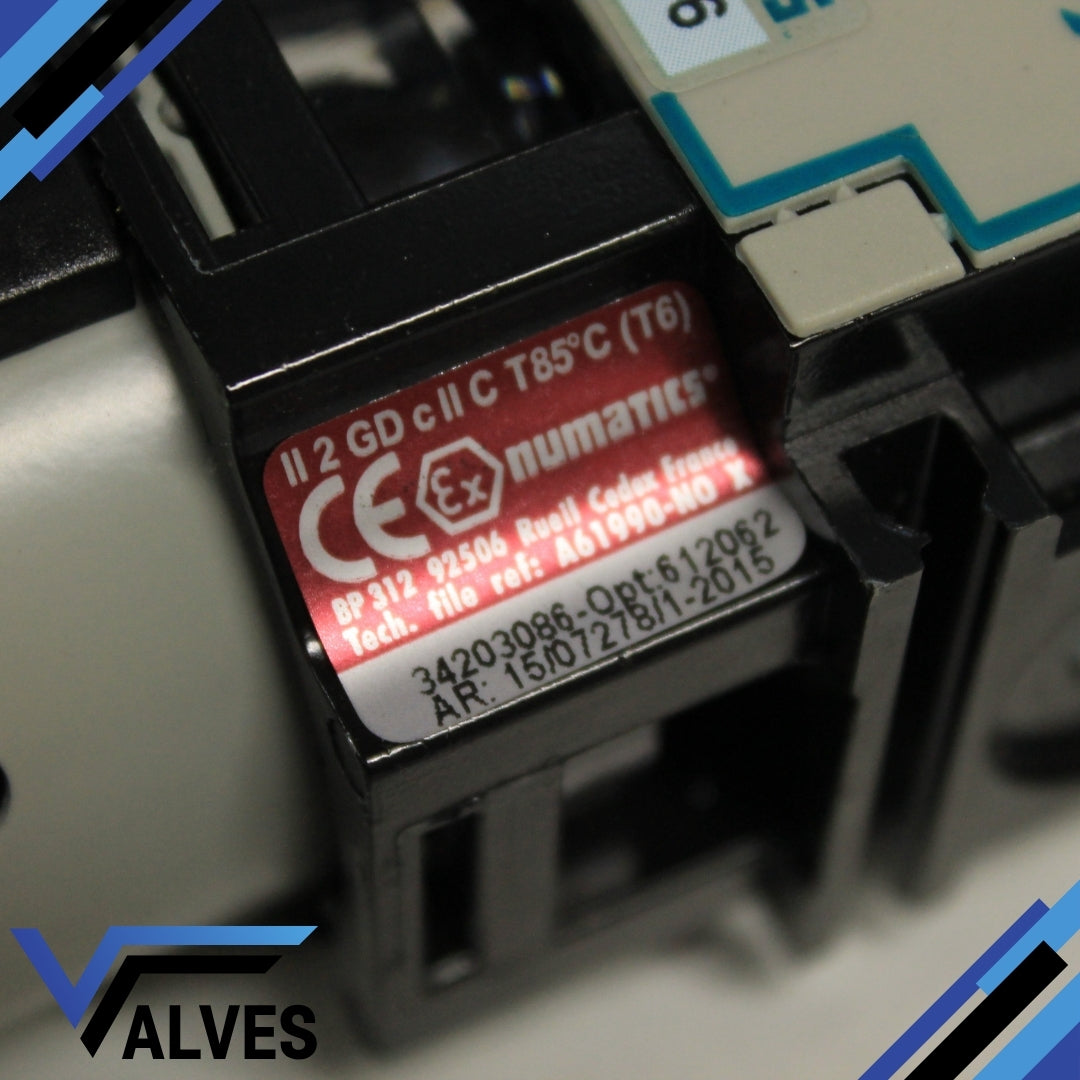
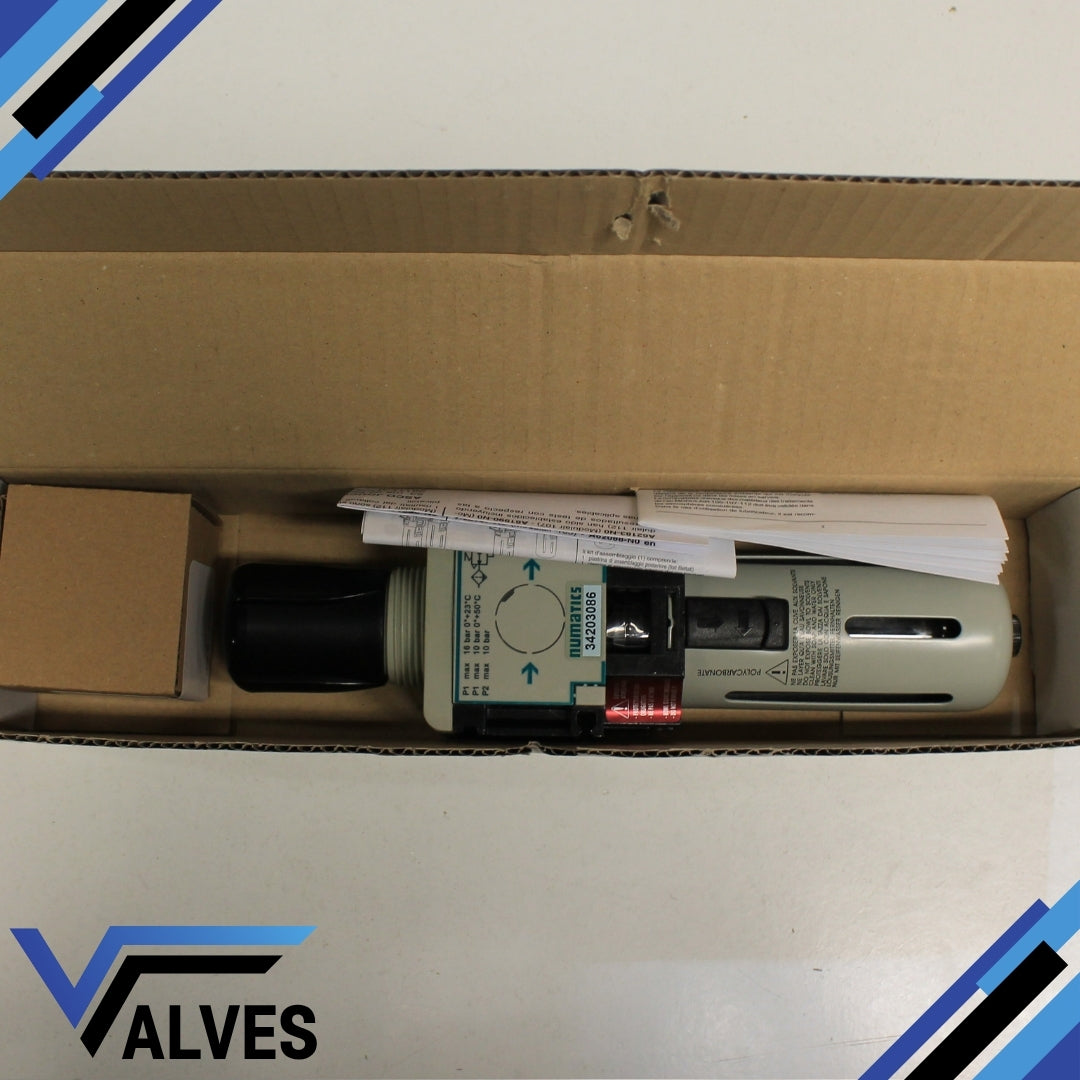
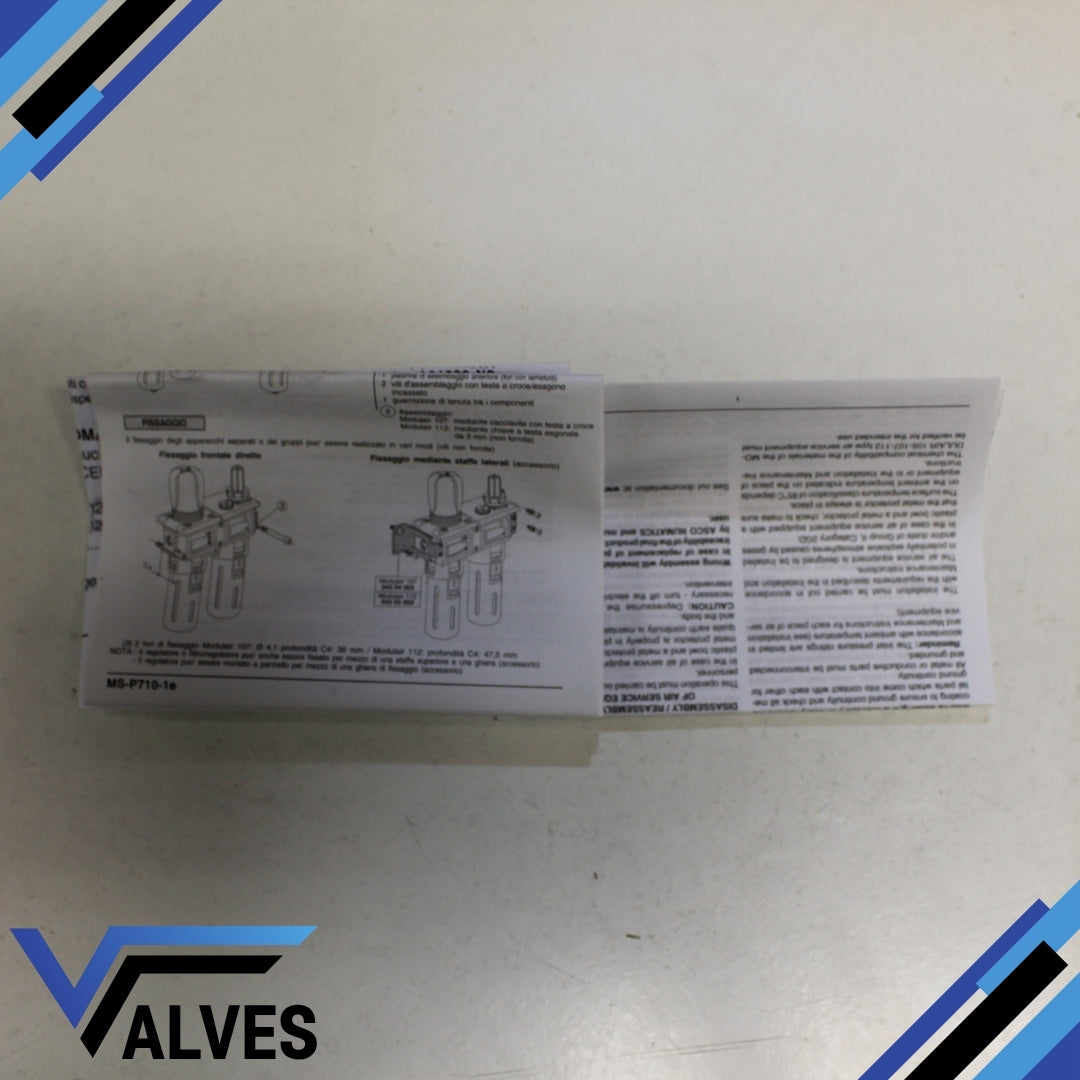
FAQ's
What is the difference between a valve and an actuator?
What types of actuators are available?
The main types of actuators are:
Pneumatic actuators – use compressed air for fast, reliable operation.
Electric actuators – use electrical power for precise control.
Hydraulic actuators – use fluid pressure for high-torque applications.
Each type offers unique advantages depending on the environment, media, and system control needs.
How do I choose the right actuator for my valve?
To select the correct actuator, consider:
Valve type and torque requirement
Power source available (air, electric, or hydraulic)
Operating environment (temperature, humidity, hazardous area)
Control signal type (on/off or modulating)
Matching actuator torque and compatibility with the valve’s ISO mounting ensures reliable performance.
What are the main types of valves used in automation?
The most common valves in automated systems include:
Ball valves – for tight shutoff and quick operation.
Butterfly valves – for larger flow control with compact design.
Globe valves – for precise throttling and flow regulation.
Check valves – to prevent backflow.
Gate valves – for full bore flow isolation.
What’s the difference between a double-acting and spring-return actuator?
Double-acting actuators use air (or power) to both open and close the valve.
Spring-return actuators use air to open (or close) the valve, and a built-in spring to automatically return it to a safe position when power or air is lost — ideal for fail-safe operation.
How often should valves and actuators be serviced?
Regular maintenance intervals depend on operating conditions, but a good rule of thumb is to inspect every 6–12 months.
This includes checking for leaks, lubrication, seal wear, and actuator responsiveness to prevent unexpected downtime.








